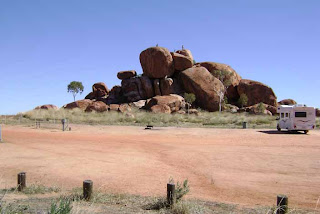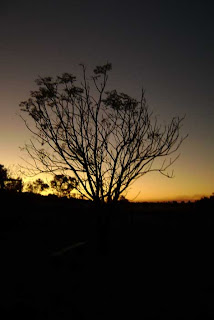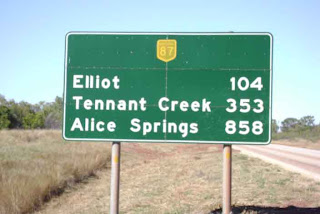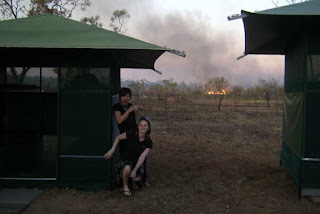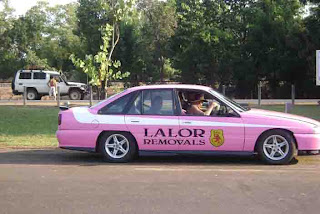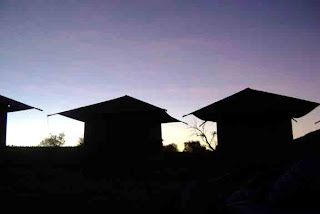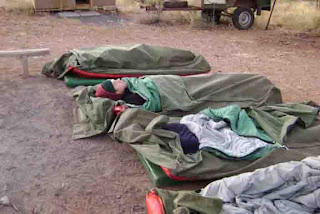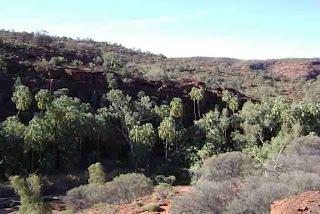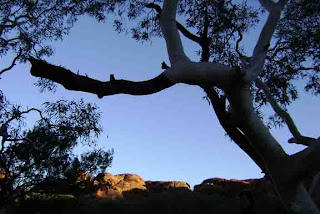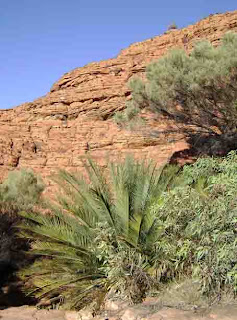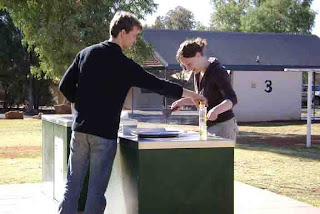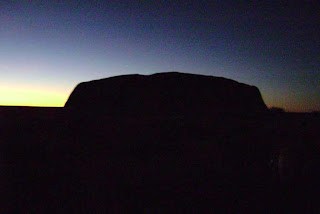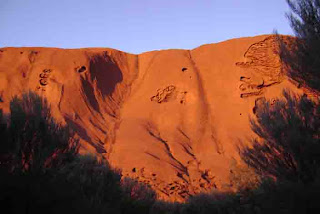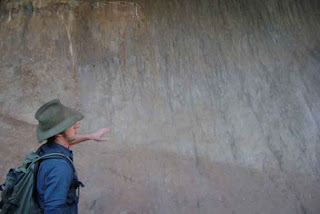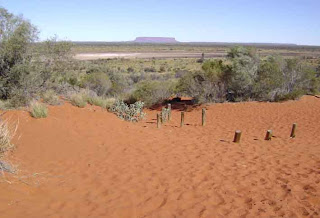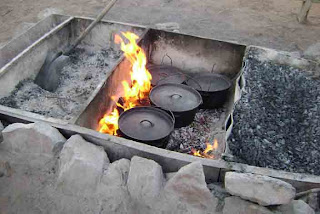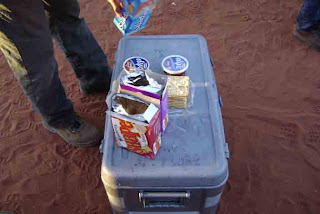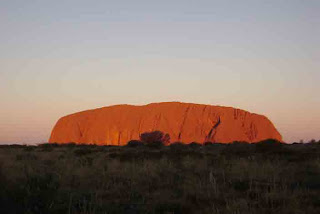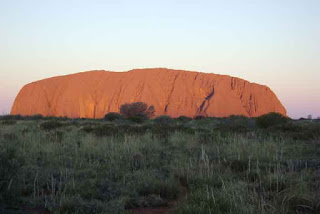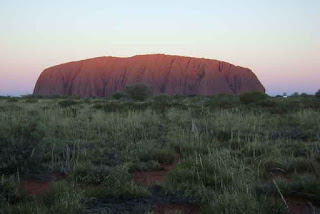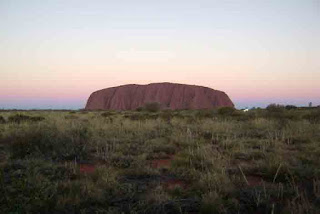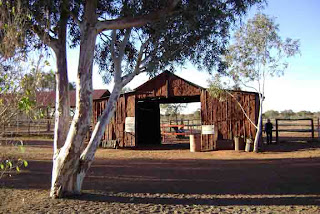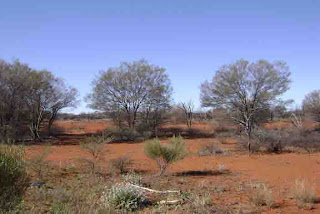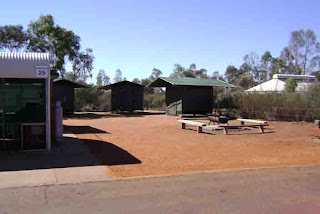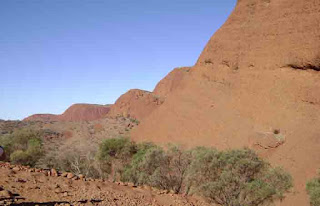
Day 9 saw us learning about termite mounds. Termites need to keep their temperature to 31 degrees C and the shape of their mounds helps them do that. First up were the Cathedral mounds, named for their 'buttresses'. Most of the very big mounds have disappeared, as it was discovered that ground up termite mound made an excellent runway surface during WW2.
Next up was the magnetic mound, found away from trees in full sun. They align themselves to get full sun in the morning and evening and less sun at midday when the sun is overhead.
There was a third kind that I never photographed - the kind you find at the base of trees. Contrary to what you might think, these termites 'help' the trees by eating out the old wood in the centre: it makes the trees more flexible when cyclones blow so they can bend rather than just break under the onslaught. These termite-eaten branches are what genuine didgeridoos are made from as well.

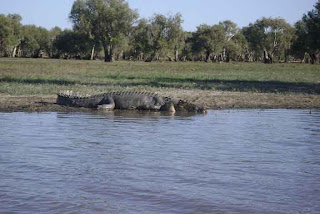

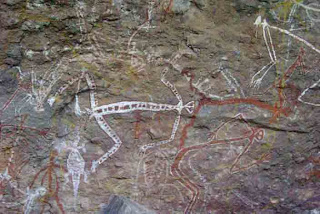

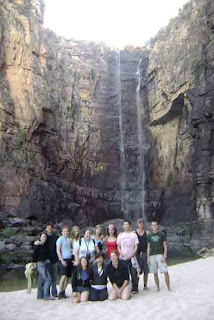
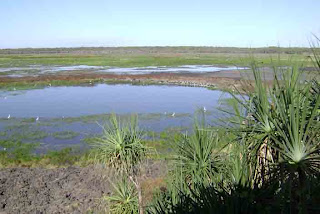
At 4pm we were due for a cruise on the Mary River. This was wonderful. There was an absolute abundance of both saltwater and freshwater crocs. Yikes! Lots of birdlife as well. Our tour guide was quite a birdwatcher and he found a new one for his 'list' today. It was interesting watching how the various birds moved around the crocs that lay sunning themselves on the banks.
Day 10 brought a swim in what must rate as one of the best swimming holes I have ever been in: the top pools in Barramundi Gorge ( Maguk). You can swim in the lower pool: 'they' have done surveys and *think* there are no salties in there. But our guide preferred to get us to walk up a bit to the top pools. Soooooo worth it. Views were spectacular again. So were the pools. You let yourself into the first deep pool... swam across to a few more rocks and crossed them into a second pool, then swam between some tall rocks into the third section where there was a waterfall splashing down. Just superb!
Day 10 afternoon we went to Nourlangie Rock. On our walk here we saw Aboriginal art. There was not much 'old' art as you might expect in other places. The rock walls were often used to teach children, or leave messages, and new bits just got scribbled over the top of old bits.
We climbed up on this walk to get a wonderful viewpoint over Kakadu. In the distance we could see an escarpment that used to be where the coastline was. Also, our guide pointed out where they are mining for uranium. "Safe" they say, but there have been cases of radiation sickness hushed up according to our guide, from the tailings.
Here is our group posing at Jim Jim Falls, before quite a few swam in the icy-cold waters. The view they got close up of the waterfalls sounded amazing, but I decided to pass this chance up!
Very last thing was did before heading back to Darwin was go to Fog Dam wetland. This was 'man-made': it was originally set up to try rice farming... but birds came and ate the rice... so they forgot about the rice and left it to develop as a wetland. Magic place. So many birds.
Back to Darwin, then a marathon trip home. Flight left Darwin at 1.30am (groan) - but amazingly, I slept for most of the flight to Sydney, and was only woken by the noises / smells of breakfast being served. We landed at 6.06am , just as the airspace was reopened for the day. Maybe we were the first plane, or maybe the plane from Perth just beat us... Then at 9.10am I left for Wellington, to arrive into a wet, windy and cold southerly!!!!! Had to wait for the train with no waiting room there anymore, but at least the cold kept me awake. Arrived home at 8pm, 'ready' for work the next day!!!!!
OK that is the last of the photos I will post. Might write more when I get a chance. We did lots that I haven't even mentioned. It was a wonderful trip.

